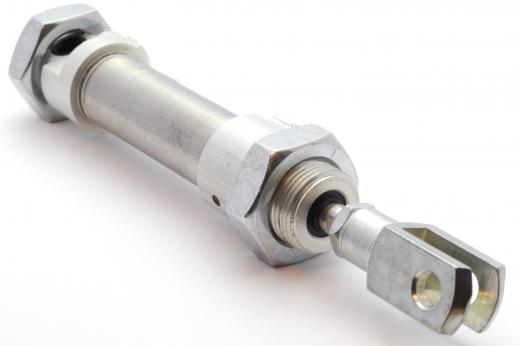Actuator assembly is a generic term used to describe any complete actuator mechanism. It is typically used to describe the actuator with all of its related output transfer linkages, wiring, or hoses. The description may also be extended to include the actuator controller, although this is usually seen as a separate entity. An actuator assembly usually consists of the physical actuator mechanism, an actuator arm, transfer link, and any integral power supply components. Simple actuator assemblies are normally supplied as complete, off-the-shelf units to ease replacement of faulty parts, while larger units may be purchased in modular form to reduce replacement costs.
An actuator is a device that translates a source of static power into a useful output motion. An astounding variety of machines, appliances, and automotive applications rely on actuators as sources of activation, switching, or adjustment motion. Many actuators, such as hydraulic and pneumatic types, are relatively simple, while others such as high-precision servo actuators are generally a lot more sophisticated and complex. A simple hydraulic ram actuator may only consist of two or three basic parts while a servo actuator may consist of a dozen or more separate parts. In both cases, though, the complete motion output unit is commonly referred to as an actuator assembly.

The exact extent of the actuator assembly definition is often difficult to express accurately. In most cases, however, it extends to parts directly involved with the generation and transfer of the actuator movement. This will typically comprise the actuator power supply wiring or pressure hoses, the actuator mechanism itself, and the actuator arm. Any secondary linkages, pins, and fasteners are often also included as part of the actuator assembly. Obviously, parts of the motion transfer chain integral to the actuated machine or appliance will not be included in the assembly description.
In the case of simple stop/start systems, the actuator controller is usually seen as a separate component. When more complex systems such as servo actuators are involved, secondary servo equipment such as interface units, controllers, and limits may also be included as part of the actuator assembly. Again, in the case of simple systems, the entire actuator assembly may be ordered as a drop-in replacement for defective units, greatly simplifying maintenance and repair work. More complex units are more often than not available in component form. This is more practical and reduces the cost of replacing defective individual parts of the assembly.
